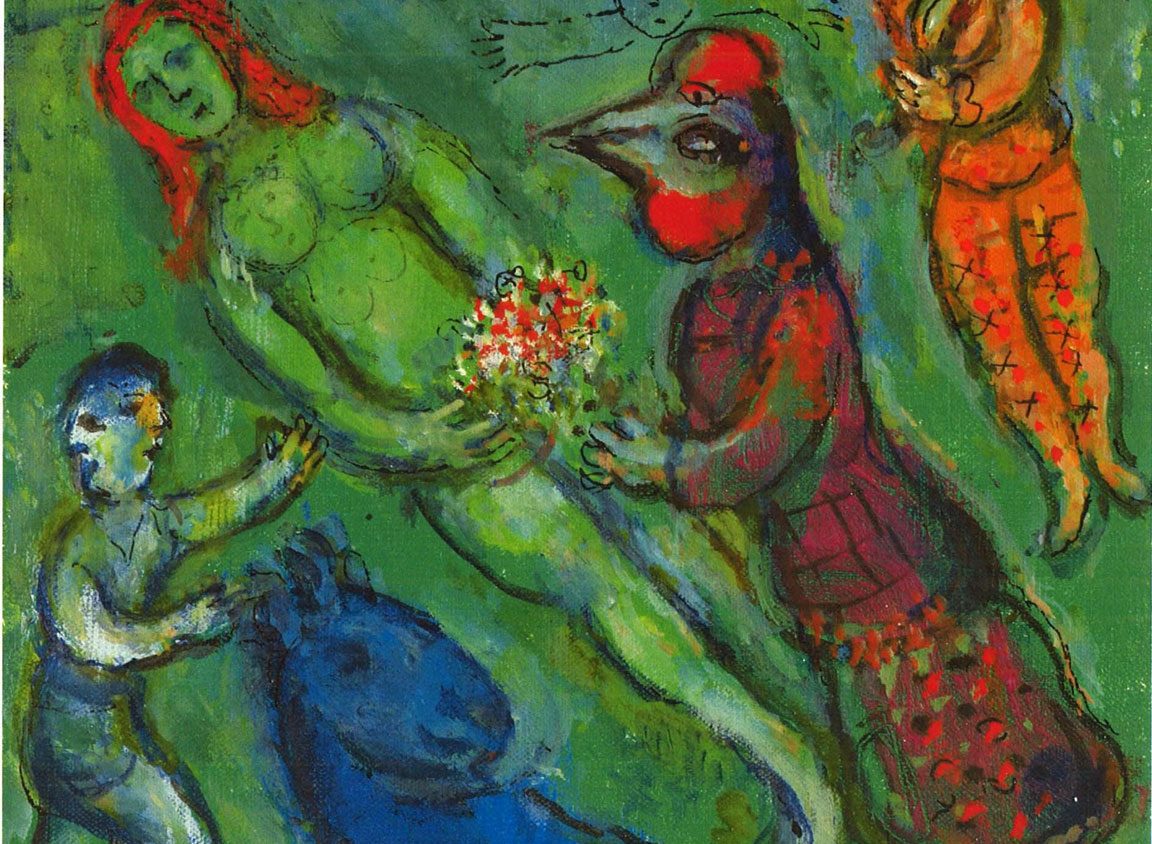Marc Chagall lived for nearly a hundred years. He left Russia for Paris and then, due to the rise of the Nazi party and anti-Jewish sentiment, left Paris for the United States.
You might think someone who had witnessed such turmoil would have made art that was dark and heavy. But Chagall’s people, animals and flowers — recurring subjects in his imagery — are rarely bound by gravity. They hover above the ground and fly.
Seven brilliant oil paintings by Chagall are on temporary view at the Jordan Schnitzer Museum of Art at the University of Oregon. Part of the museum’s Masterworks on Loan program, these paintings stand out as a unified collection of the artist’s style. They are colorful and fanciful, and above all they evoke a fondness for the subjects painted — a love for the village where the artist was raised and the love he felt for his wife.
You might recognize On the Couch, where an angel flying above watches a man embracing a woman, a field of flowers in the background. Unrestricted by gravity or perspective, a table floats above the moon in The Lovers in the Bouquet. A boy’s head has two faces instead of one in Green Nude in the Village.
Vitebsk, the small Jewish village the artist came from, was destroyed first by the Russians and then by the Nazis. His representations of Vitebsk, and the people and animals that inhabited it, are those of someone picturing a place that no longer exists.
Perhaps Chagall chose to see the better side of humanity, leaving out the dark. Or maybe that was just the way he remembered — through a lens of love.
Chagall’s paintings are on exhibit through March 12. Admission is $5, free on first Fridays.
